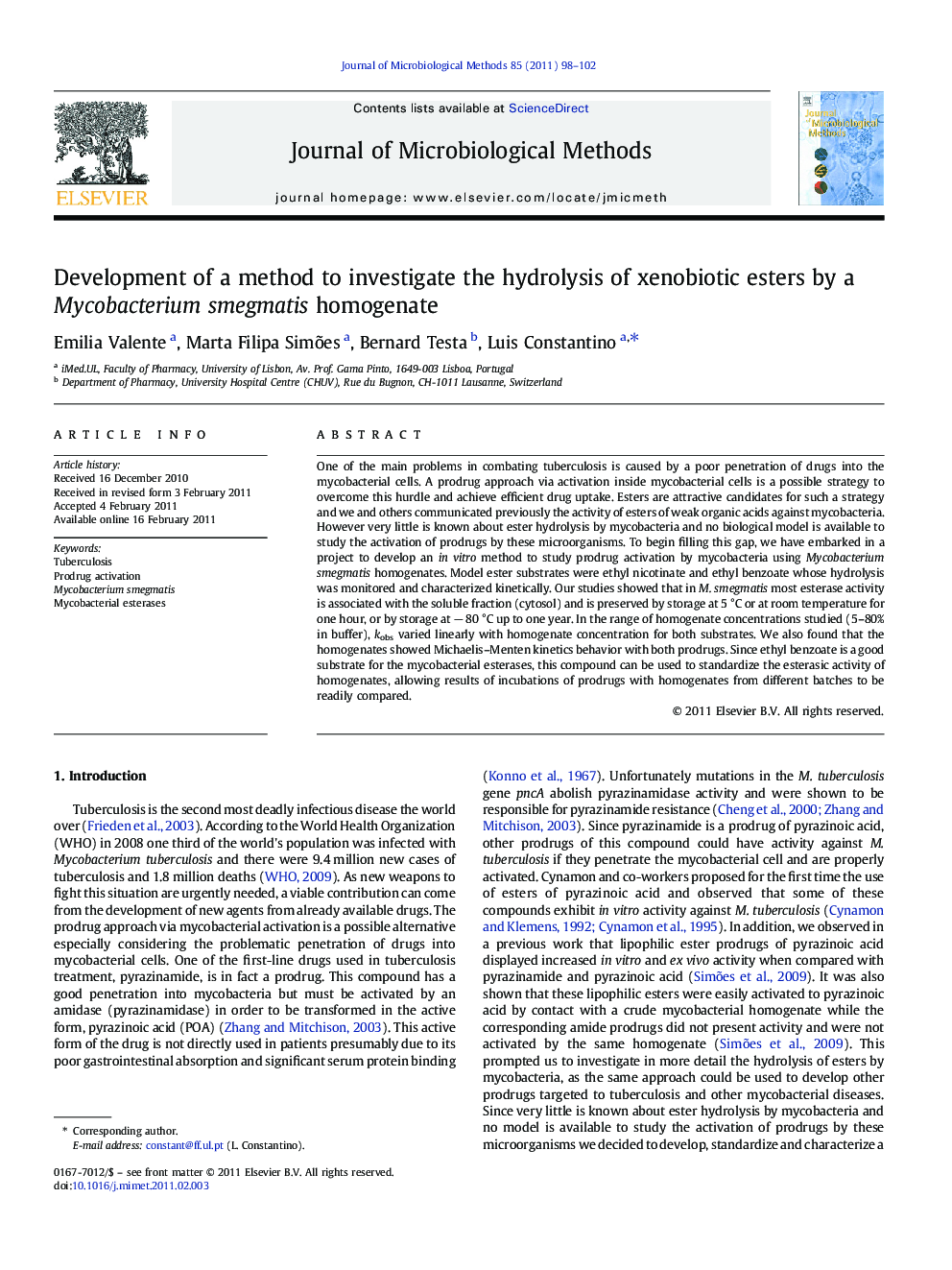| Article ID | Journal | Published Year | Pages | File Type |
|---|---|---|---|---|
| 2090460 | Journal of Microbiological Methods | 2011 | 5 Pages |
One of the main problems in combating tuberculosis is caused by a poor penetration of drugs into the mycobacterial cells. A prodrug approach via activation inside mycobacterial cells is a possible strategy to overcome this hurdle and achieve efficient drug uptake. Esters are attractive candidates for such a strategy and we and others communicated previously the activity of esters of weak organic acids against mycobacteria. However very little is known about ester hydrolysis by mycobacteria and no biological model is available to study the activation of prodrugs by these microorganisms. To begin filling this gap, we have embarked in a project to develop an in vitro method to study prodrug activation by mycobacteria using Mycobacterium smegmatis homogenates. Model ester substrates were ethyl nicotinate and ethyl benzoate whose hydrolysis was monitored and characterized kinetically. Our studies showed that in M. smegmatis most esterase activity is associated with the soluble fraction (cytosol) and is preserved by storage at 5 °C or at room temperature for one hour, or by storage at − 80 °C up to one year. In the range of homogenate concentrations studied (5–80% in buffer), kobs varied linearly with homogenate concentration for both substrates. We also found that the homogenates showed Michaelis–Menten kinetics behavior with both prodrugs. Since ethyl benzoate is a good substrate for the mycobacterial esterases, this compound can be used to standardize the esterasic activity of homogenates, allowing results of incubations of prodrugs with homogenates from different batches to be readily compared.
Graphical AbstractFigure optionsDownload full-size imageDownload as PowerPoint slide
